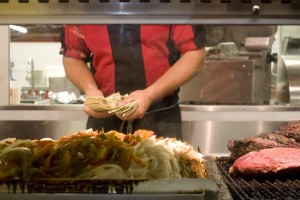 Employee theft is a major problem in the retail and hospitality industries—a more significant one, in fact, than theft perpetrated by customers. According to the National Restaurant Association, employee theft accounts for about 75 percent of restaurants’ inventory losses; this equals more than three percent of annual sales. Increasing POS security in your restaurant can cut down on such theft. Let’s take a look at four ways to do this:
Employee theft is a major problem in the retail and hospitality industries—a more significant one, in fact, than theft perpetrated by customers. According to the National Restaurant Association, employee theft accounts for about 75 percent of restaurants’ inventory losses; this equals more than three percent of annual sales. Increasing POS security in your restaurant can cut down on such theft. Let’s take a look at four ways to do this:
1. Deploy video surveillance cameras and integrate them with your restaurant POS system. Voiding transactions, cancelling orders, and processing the redemption of coupons that were never really offered comprise three common tricks restaurant staff members use to steal cash from the till. “Sweethearting” – offering free or deeply discounted food and beverages to friends or family – is another common act of employee theft.
Integrating video surveillance cameras into your restaurant POS system, and setting the video surveillance system to record activity based on these and other seemingly odd occurrences, increases POS security by making it easy to identify which employees are responsible for incidents of theft. What’s more, when employees are aware that they are being watched and that suspicious interactions or patterns of using the POS system will be recorded, they will be less likely to dip into the till or engage in sweethearting in the first place.
2. Track and limit POS system access. Some restaurant operators use PIN codes to control which staff members can access the POS system. While this may be the easiest method to enlist for this purpose, it is not the most supportive of POS security. Nor does it effectively prevent employees from perpetrating another type of theft that’s common in restaurants whose POS systems are used for time and attendance recording. The latter is theft of company time and wages through “buddy-punching” (clocking co-workers in and out when they are not really present).
To control and keep tabs on who logs into your POS system and when, consider issuing magnetic stripe cards employees must successfully swipe through a magnetic stripe reader before they gain access to it. Biometric technology—specifically, fingerprint readers—can be used for the same purpose.
3. Set different POS security levels in your restaurant POS software.
Allowing staff to access only the information they need to do their job, and to perform only those tasks they are authorized to complete in keeping with their position, goes far toward controlling theft. Program your POS software to control what each employee can or cannot see and do. Using log-in information (e.g., records of magnetic card swipes and fingerprint submissions) should enable you to track every employee and transaction, heightening POS security by giving you the documentation necessary to hold employees and managers accountable for their actions.
4. Conduct background investigations of prospective employees. Start by contacting each candidate’s previous employers, asking them whether the individual in question appeared to run high amounts of discounts or canceled transactions, frequently forgot to give customers their receipts, or was ever caught buddy-punching.
Additionally, run a criminal background check. Previous employers may not uncover problems with an individual to whom you’re considering offering a job. With a criminal record (or the lack of one) on the table, there’s no ambiguity.
Savvy restaurant operators know that POS security should always remain a priority. When you have tight POS security in place, your potential to experience employee theft will plummet.






